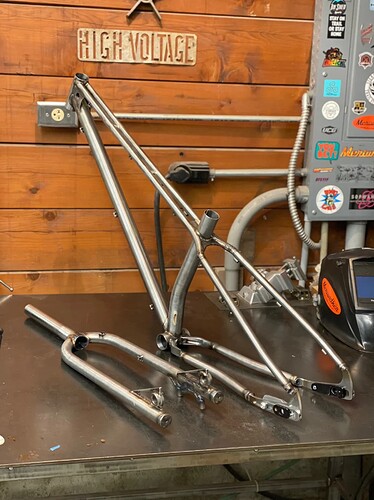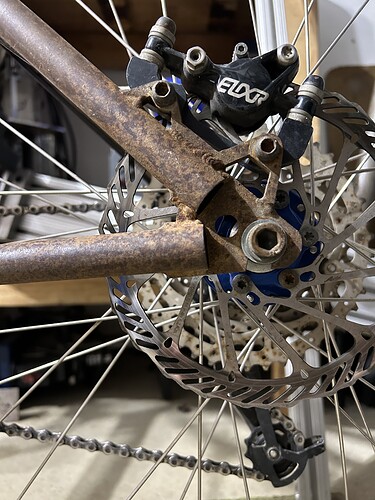Is anyone out there using stay plugs for flat dropouts when tig welding? Similar question, if slotting the stays what are builders doing to cap the end of the stays if tig welding?
The real question: I have a tig setup and decent tig skills but no brazing setup (or skills). I’ve used hooded dropouts up to this point but want to use PMW low mount on a future build.
You could use stay plugs or once you get your structural welds done on slotted stays just fill the opening with weld and clean up. With brazing I fill the bulk of the void with small diameter rod. You could do the same. You just want a seal.
Thanks for the reply. I figured you could do it, it just seems like a lot of heat and activity in a relatively delicate area. I wasn’t sure if there were any tips or secrets to make the process as smooth as possible. But i’m probably just overthinking.
I know @Meriwether uses tig + plate + plugs. He can help answer your questions.
1 Like
@Daniel_Y thanks for checking your mental builders encyclopedia.
I’m guessing it’s best to fully weld the plug to the dropout, and then just follow my normal tacking/welding workflow.
I just notch and then weld everything shut. Some big rod helps for the open end.
-Walt
1 Like
Is there a structural reason the ends need to be closed, or just aesthetics and water infiltration?
I wouldn’t say the ends need to be closed, many bikes have been made without capped stays. It sure looks nicer to have them capped though.
2 Likes
Corrosion is the main one.
1 Like
I have only done 2 bikes with plate type dropouts, both times I gave them a gentle tappy tappy with a panel hammer to get them down as far as I could and then used silicon bronze tig wire to fill in the end. probably not the tidiest, but it worked and you could tidy it up nicely with files/dremels etc. I did not though, just left it rough and ready hahaha
3 Likes


